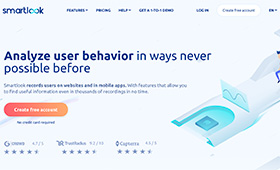How to Test Psychological Triggers using Data Analytics
The role of a marketer is not an easy one. He has to find out new ways of marketing and keep fine tuning his or her skills in order to make the most out of marketing efforts. Internet is a place where there are new trends rising every day. You need to keep up with them to be successful at marketing. One way to go is the usage of data analytics.
Why Evaluate Psychological Triggers?
Irrespective of the amount of education you have, you have to be on your toes to get the attention in the online world. You need to know what the users want and present it to them in such a manner that would appeal to them.
All this is not easy, and as an online marketing manager, you get 1001 new ideas every day. How do you know what works and what does not? What should you do more? How do you convince the management that the fun application you launched on Facebook is actually reaping some benefit? Data Analytics is the answer to this and many more such questions.
There are many data analytics tools available in the market out of which Google Analytics is the best amongst the free ones. WebTrends and Omniture are the most popular paid analytic tools. You also have specific tools for measuring social media performance.
Different Approaches for the Same Purpose
There are different psychological triggers on which we target our marketing campaigns. It can be a curiosity approach or a limited time offer. A psychological trigger is anything that creates an urge in the reader to perform the desired action. This action could be anything like downloading a trial version, an ebook, buying a product, subscribing for a blog, liking a fan page, entering an online contest and the like.
Words or phrases that motivate the reader to perform such actions are called the “call to action” words.
Every marketing activity and every piece of marketing communication has a “call to action” associated with it. Irrespective of the purpose of the marketing campaign, there are multiple ways of doing it. Different psychological triggers can be used for a single marketing campaign to work. A/B testing strategy is used in some cases where both the psychological triggers are used on a particular number of people and the results are evaluated based on data analytics reports. Based on this summary, we can conclude which psychological trigger has been more successful.
An Example of A/B Testing
For example suppose a promotional email has to be sent to n number of subscribers as a part of an email marketing campaign. Now the marketing team works on it and shortlists two kinds of psychological triggers based on which the communication with be done.

A/B Testing
Independent design is made and copies are written for the same purpose. Now we have two emails ready both created according to two different psychological triggers. Now the email database can be divided into two parts, and each email is sent to half of the subscribers. After the emails are sent and results are in, we can analyze the data collected.
How it Helps
Apart from analytic tools that check the source from which the visitors came to the landing page, other factors that can be checked are the opening rate of the emails. If the subject line is good, more people open the email to check if it has anything for them in it. Some subject lines are so boring that you are sure the email is spam.
A/B testing is very helpful in finding out what kind of approach, words or psychological triggers work best with what kind of audience. With the right kind of research data collected through this technique, better strategic marketing decisions could be made.







No responses yet to “How to Test Psychological Triggers using Data Analytics”